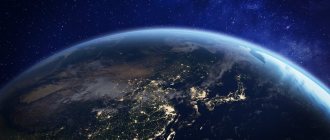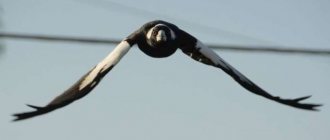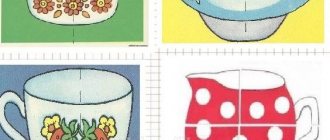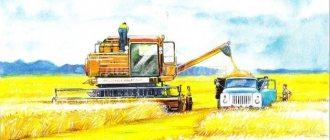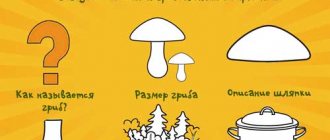Conversation with elements of the game “Space Conquerors”
Conversation with game elements
"Conquerors of Space"
Target:
the formation of ideas about the holiday “Cosmonautics Day”, elementary ideas about space, about the first flight into space.
Tasks
- Summarize and systematize children's knowledge about space flights: introduce them to Russian scientists who were at the origins of the development of Russian cosmonautics-K. E. Tsialkovsky, S. P. Korolev.
- To consolidate children's knowledge that the first cosmonaut was Russian citizen Yuri Alekseevich Gagarin.
3. To foster patriotic feelings, pride for our country, for the heroes of the pilots - the astronauts who conquered space.
4. Correction and development of memory, speech, observation.
Progress of the lesson.
1.Organizing moment.
-Teacher:
Today, guys, our country celebrates Cosmonautics Day.
Who remembers why this holiday is celebrated on April 12?
(On April 12, 1961, for the first time in the world, a person flew into space. He was a Russian cosmonaut.) What is his name? (Yuri Alekseyevich Gagarin)
Educator:
Since ancient times, man dreamed of rising to the sky, and he realized his dream. This is how balloons, airplanes, and helicopters appeared. But your great-great-grandfathers could not imagine that it was possible to fly into space. And now there are people who fly there to work.
Educator:
What are they called?
Children: They are called astronauts.
—Who are astronauts? (Children's answers)
Cosmonauts are the pilots who fly spacecraft. Cosmonauts are also called crew members who conduct research on board a spacecraft.
Educator:
What could they see through telescopes? (Children's answers)
They could see other planets
-What planets do you know? (Children's answers)
Moon, Mars, Venus and other planets.
Educator:
There are 10 planets in outer space. People really wanted to know if there was life on other planets. And if there is, who lives there? Are these living creatures similar to people? But to find out, you need to fly to these planets. Airplanes are not suitable for this, because the planets were very far away.
-And what did the scientists come up with? (Rockets, spaceships)
-Who was the first in Russia to come up with a rocket? (Konstantin Eduardovich Tsialkovsky) portrait showing.
Student1:(
A simple teacher, Konstantin Eduardovich Tsialkovsky, lived in the city of Kaluga. He loved to watch the stars through a telescope, studied them, and he really wanted to fly to these planets. And he decided to design an aircraft that could fly to some planet. He made drawings, carried out calculations and came up with such an aircraft. But, unfortunately, he did not have the opportunity to make such an aircraft.)
-Who made such an aircraft anyway?
Student 2:(
Children's answers - Sergei Pavlovich Korolev (portrait showing) - a scientist-designer who, after many, many years, was able to design and manufacture the first space satellite, but it was dangerous to send a person and it was decided to send animals.
The first two dogs to fly into space and back on a rocket were Belka and Strelka. But they could not tell about their journey, and a man went into space.)
Educator:
-Do you know who was the discoverer of space? -The first flight into space was made by our cosmonaut, Yuri Alekseevich Gagarin.
An ordinary Russian guy. We are proud that OUR Russian was the first to fly into space. After Yuri Gagarin, hundreds of cosmonauts flew into space.
Collage “Conquerors of the Universe)
Educator:
When space flights began, we had to think about where the astronauts would live, so as not to spend too much time on the road to their place of work.
First, our scientists built the MIR space station, and then it was replaced by the more modern International Space Station (ISS). Astronauts from different countries live and work on it (engaged in space exploration) for a long time.
Student3:
And in 1965, Alexey Leonov first stepped out of a rocket into outer space. Dressed in a spacesuit, he hung next to the ship in empty space for several minutes.
Educator:
Everyone knows who a robot is. So, robots often work in space. Such robots help people explore planets. For example, robots were able to take a handful of soil from the Moon and bring it to Earth for research. Robotic machines have visited Venus, penetrating its toxic clouds, and now scientists have maps of the planet. Soon, robotic lunar rovers were launched to the Moon, traveling on the surface of the Moon and transmitting data to Earth. And now hundreds of robotic satellites are flying around our Earth. They transmit weather information to the ground and monitor the movement of ships in the ocean.
Educator:-
Maybe one of you will also become an astronaut or a rocket designer and invent a rocket in which people will not experience such overloads as cosmonauts are experiencing now, and will glorify our Motherland.
Educator:
Well, today we will play the game “Black Box”
-I have questions on the screen, and the answers are in this box. You read the question and give the answer, and I will open the box and take out the pictures. Let's split into 2 teams. Team 1 - “Earth”, 2 - “Mars”.
Attention first question.
- Name the Russian scientist, the founder of astronautics. (K. E. Tsiolkovsky)
2. The first person to conquer the starry sky.
(Yuri Alekseyevich Gagarin) - 3. How long did Yu. A. Gagarin’s space flight last? (108 min = 1 hour 48 min)
4. What was the name of Yu. A. Gagarin’s spaceship? ("East")
5. The world's first female astronaut. (Valentina Vladimirovna Tereshkova)
6. Who was the first to go into outer space? (Alexey Arkhipovich Leonov)
7. Who was the first person to set foot on the surface of the Moon?
(Neil Armstrong)
8. What are the names of Russian and American reusable spacecraft? (“Buran”, “Shuttle”
)
9. What is the name of the American launch vehicle that suffered a disaster on January 28, 1986 - it exploded 74 seconds after launch?
(“Challenger”)
10. In what year was the first artificial Earth satellite launched?
(October 4, 1957)
11. What was the name of the self-propelled vehicle that traveled on the surface of the Moon? ("Lunokhod")
12. When and by whom were observations made through a telescope for the first time?
(Galileo Galilei, 1610)
13. Name the nearest star. (Sun.).
14 In what constellation is the North Star located? (In Ursa Minor.)
15. What event is the celebration of Cosmonautics Day dedicated to? (April 12, 1961, flight of Yuri Alekseevich Gagarin.)
16. .
Name the first Soviet designer of rocket and space systems? (Academician Sergei Pavlovich Korolev.)
17. In the atmosphere of which planet, besides Earth, has an ozone layer been discovered? (Mars.)
18. . Which planet experiences sulfuric acid rain? (On Venus.)
19 Who were the first space travelers?
(Dogs Belka and Strelka.)
20. . Name the brightest star in the sky? (Sirius in the constellation Canes Venatici.)
Educator:
Now let's summarize. Well done! - We remembered a lot and learned a lot about the Universe. Now let’s put together the “Space” case
Conversation dedicated to Cosmonautics Day in the middle group on the topic: “About space for children”
Conversation about space. Lesson in the middle group.
On the topic: “The Road to the Stars”
PERFORMED:
Mishchenko O.I
Tasks:
Introduce children to
Cosmonautics
. Expand your horizons
children.
Enrich your vocabulary: planet, astronaut
, spacesuit
Material:
pictures about
space
.
Progress of the conversation
:
Guys, have you ever looked at the sky? What did you see there?
(children's answers)
People have been looking at the sky and admiring the stars
.
They are very interested to know what they are like. Do you want to know about the stars
?
To learn about the stars
, people built
a space rocket
. AND
were the first to be sent into space
: Belka and Strelka, and when they returned, people also wanted to get closer to
the stars
.
Yu went
next to look at .
A. Gagarin is the first cosmonaut
.
In space
very, very cold.
If you go into space without
a special suit, you can instantly freeze and turn into ice.
In addition, there is very little air in space
and an ordinary person will not be able to breathe there.
That is why the astronaut
who flew into
space
was put on such a spacesuit.
The suit is very warm and protects the astronaut from the cold even in space
. In addition, a person can breathe in a spacesuit; it supplies the person with air.
When the astronaut boarded the rocket
, the countdown began: “Five, four, three, two, one, START!”
The rocket took off, fire bursting from its tail - its engine was working so hard. And the rocket flew high into the sky. She rose higher and higher. And so the rocket ended up in outer space
.
Look what the astronaut
when he found himself in it.
This is our planet Earth - we live on it. As you can see, it is round and looks like a big ball. Our planet is very, very large. We don’t notice that it looks like a ball. But if you rise high, high above the earth, then from space we will see it like this
like in this picture. Look how beautiful our planet is!
What do you think is blue on our planet? (children's answers)
.What's green?
Brown? (children's answers)
Look, this is a small ball near the earth - the moon. Moon
much smaller than earth and in space
it also looks like a ball.
And this is how the astronauts saw our Sun
. Huge
glowing fireball. But astronauts cannot
they could - because the Sun is very, very hot. If you get too close to it, you might even burn out.
And also astronauts
saw other planets that revolved around the sun. Look, this picture shows all the planets that revolve around the Sun.
Notice how huge our sun is! It is larger than all other planets! And our planet Earth - here it is - the third from the Sun - is very small compared to other planets. All planets in the solar system revolve around the Sun in their orbit. On those planets that are very close to the Sun it is very hot! We couldn't have stayed there for even a second! And on the most distant planets - which are far from the Sun - on the contrary, it is very cold, because the sun's rays do not reach there well.
Progress of the conversation:
Educator. Guys, do you know that our country celebrates April 12 (children’s answers)
.
Today we will talk about how people began to explore outer
space and why
April
12 became a holiday. Guys, tell me, who is Yu. A. Gagarin? (answers
children). On April 12, 1961, Soviet cosmonaut Yu
.
A. Gagarin
launched from
Baikonur
cosmodrome Vostok spacecraft and for the first time in the world made an orbital flight around the planet Earth.
The flight in near-Earth space
lasted 108 minutes.
Guys, we also have heroes who flew into space
and returned safely to earth.
They flew into space before Yu
.
A. Gagarin. Who guessed who we were talking about? (children's answers)
.
That's right! This is Belka and Strelka. of Cosmonautics
well .
On August 19, 1960, the second spacecraft
into Earth orbit.
The launch took place from Cosmodrome
at 15:44.
The weight of the satellite ship without the last stage of the launch vehicle was 4.6 tons. On board the spacecraft
were Belka and Strelka, as well as mice, insects, plants, fungal cultures, seeds of corn, wheat, peas, onions, some types of microbes and other living ones creatures.
On August 20, 1960, the lander with animals on board landed safely. The flight of Strelka and Belka lasted more than 25 hours. During this time, the satellite ship made 17 complete orbits around the Earth. The successful journey of Belka and Strelka proved the ability of living organisms to withstand all the factors of space flight
. The dogs, returning to Earth, became real heroes.
Guys, do you know what the solar system is? (children's answers)
.
The solar system consists of planets that revolve around our sun. In addition to planets, the Solar System also consists of moons, comets, asteroids, minor planets, dust and gas. Everything in the solar system revolves around the sun. The Sun contains about 98% of the mass of all objects in the Solar System. The larger an object, the greater the force of gravity it has. The Sun is so huge that its powerful gravity attracts all other objects in the solar system. Does anyone know how many planets revolve around the sun? (children's advice)
. 9 planets: Mercury, Venus, Earth, Mars, Jupiter, Saturn, Uranus, Neptune, Pluto.
What is the moon? (children's answers)
. The Moon is a natural satellite of the Earth; it revolves around our planet for at least 4 billion years. This is a stone ball about four times the size of the Earth. The moon revolves around the Earth, and the Earth revolves around the Sun. While our planet orbits the Sun. 1 year passes for us, the Earth also rotates around its axis in 24 hours.
Lesson summary
:
Guys, our lesson has come to an end.
. We repeated what we knew and learned a lot of new things!
Russia, as a space power, has a large number of achievements in the field of astronautics. Let's remember the main milestones in the history of Russian space science and practice.
Humanity has long dreamed of flying to the stars, of soaring beyond the Earth. Since time immemorial, people have fantasized about flying to the Moon, to the planets of the solar system, to distant mysterious worlds.
In 1911, the prophetic thought of Konstantin Eduardovich Tsiolkovsky sounded: “Humanity will not remain forever on Earth, but, in pursuit of light and space, it will first timidly penetrate beyond the atmosphere, and then conquer the entire circumsolar space.”
Tsiolkovsky is called the “father of astronautics”, “the founder of astronautics”. A self-taught teacher from Kaluga, Konstantin Eduardovich devoted his life to the study of space and interplanetary communications. He was the first ideologist and theorist of human exploration of outer space. Tsiolkovsky's famous works on aviation, rocket navigation and space flight have become classics of technical thought.
Korolev Sergey Pavlovich
- a leading scientist and designer in the field of rocketry and space research, academician, twice hero of socialist labor, laureate of the Lenin Prize. He stood at the origins of Russian cosmonautics. Korolev is the Chief Designer, under his leadership satellites and spaceships were created.
On this day, a message was heard on the Moscow radio air: “...As a result of a lot of hard work by research institutes and design bureaus, the world's first artificial Earth satellite was created. On October 4, 1957, the first satellite was successfully launched... Currently, the satellite describes elliptical trajectories around the Earth... Artificial Earth satellites will pave the way for interplanetary travel..."
.
The message from Radio Moscow was immediately repeated by all radio stations in the world. The Russian word “sputnik” was heard on different continents and in different languages of the planet.
The conquest of space has begun - a new era in the history of earthly civilization. For the first time, a man-made aircraft flew into space and became an artificial celestial body.
Sputnik 1 went down in history as one of the greatest human creations of the 20th century. Western newspapers called him a “Russian miracle,” “a feat of which all humanity can be proud.”
Today the first satellite appears to us to be small and very simplified. A metal ball with a diameter of 58 cm and a weight of 83.6 kg contained two radio transmitters, its antennas had a length of 2.4 to 2.9 meters. But the launch of Sputnik marked a turning point in the development of science and technology. The first orbits of the satellite became the first steps of world astronautics.
And less than a month later, on November 3, 1957, a second satellite appeared in the sky. Sputnik 2 was equipped with various research instruments, onboard power supplies, recording equipment, and most importantly, it was inhabited. The dog Laika went into space in a special container installed on it.
Then there was the third satellite - a gigantic laboratory for that time with a total weight of 1327 kg.
Now there are many man-made devices orbiting the Earth, called satellites.
or artificial satellites. Some satellites collect and transmit information to scientists on Earth. Others pick up radio, television and telephone signals and send them through outer space to other points on Earth (satellite communications).
Moon exploration
1959 was called the year of the moon. In January, the first Soviet interplanetary station, Luna-1, went to the Moon. In September, the first flight from Earth to another celestial body - to the Moon - was made; the Luna-2 station delivered pennants there. In October, for the first time, man saw the far side of the Moon, which was photographed by the Luna-3 station.
Then there were several more launches to the Moon. Each team collected new rock samples and other data. Scientists are still studying moon rocks to better understand how the Moon was formed and how evolution took place here millions of years ago. This information can help unravel many of the mysteries of the formation of the Earth.
Man in space
Almost half a century has passed since the day when man first left his native planet - April 12, 1961
.
What does this day mean to us? Orange spacesuit, white pressure helmet, red letters “USSR”. And hands raised in a solemn farewell gesture. The mighty roar of engines. A flood of fire and smoke. Gagarin
resounding throughout the world .
In 2014, Yu.A. celebrated his 80th birthday. Gagarin
“Vostok” started at 9:07 am. The earth heard a voice from space and knew the situation. People from all continents watched the space flight with bated breath. At 10.55, Vostok and its pilot landed near the village of Smelovka, Saratov region. 108 minutes united the planet with a single concern for the fate of the hero, racing in the vastness of the Universe, and then with a single delight. "Triumph of the 20th century. A great achievement in history. Grandiose!”, “Major Gagarin has the honor of completing the most daring and fantastic journey ever undertaken by man,” the newspapers of the world wrote. Man burst into space, crossed the threshold of the inaccessible, circled his planet, looked at it from the side. Years and decades have passed, people have achieved new victories in space exploration. But the flight of Yuri Gagarin will forever remain the brightest event in the history of civilization.
Valentina Vladimirovna Tereshkova
- the world's first female cosmonaut, Hero of the Soviet Union, Major General. In June 1963, aboard Vostok 6, she took part in a group flight of two spacecraft at once. The flight lasted almost three days. Tereshkova’s call sign for the duration of the flight is “Seagull”; the phrase she said before the start: “Hey! Heaven, take off your hat!
Svetlana Evgenievna Savitskaya
(b. 1948) - Soviet cosmonaut, the second female cosmonaut in the world (the first was Valentina Tereshkova) and the first female cosmonaut in the world to go into outer space. The only woman twice Hero of the Soviet Union, Honored Master of Sports of the USSR (1970). Pilot-cosmonaut of the USSR (1982).
Elena Kondakova
- the third Russian female cosmonaut and the first woman to make a long flight into space.
Her first flight into space took place on October 4, 1994 as part of the Soyuz TM-20 expedition, returning to Earth on March 22, 1995 after a 5-month flight at the Mir orbital station.
Kondakova's second flight as a specialist on the American spacecraft Atlantis (shuttle) as part of the Atlantis expedition STS-84 took place in May 1997.
The first earthling to go into outer space was the Soviet cosmonaut A.A. Leonov.
This happened in March 1965.
But, as Gagarin said, these victories were not achieved without bloodshed. There were also tragic moments in the history of Russian cosmonautics.
On April 23, 1967, the Soyuz-1 satellite spacecraft flew with cosmonaut V.M. Komarov .
During the descent to Earth, the astronaut died due to a failure of the parachute system.
On June 6, 1971, the flight of cosmonauts V.N. took place. Volkova, G.T. Dobrovolsky and V.I. Patsaev on the Soyuz-11 satellite and the Salyut orbital station. During the descent to Earth, due to depressurization of the ship's cabin, the astronauts died.
The profession of an astronaut requires enormous courage, excellent physical fitness, and professionalism.
Space stations
The duration of space flights gradually increased from several hours to several months, a year or more. Astronauts can stay at space stations for a long time. Their life in space helps scientists on Earth better understand the influence of gravity and other features on the human body. The first such space laboratory was the Salyut station, launched in 1971. A total of 7 Salyuts were launched into orbit, which replaced and complemented each other.
1986 they were replaced by the Russian space station "Mir"
as more advanced and efficient. The Mir station is a whole hotel in orbit; its design allowed the simultaneous mooring of not two, but six spacecraft or special compartments - modules to the station at once. The Mir station carried out space service for 15 years. In 2001 it ceased to exist. After leaving orbit, it entered the dense layers of the atmosphere, part of it burned up, and part of it fell into the Pacific Ocean.
Currently, a joint project of 15 countries (Germany, Denmark, Spain, Italy, Russia, USA, Japan, etc.) is operating in orbit - the International Space Station
(ISS). It consists of large laboratories for international space research. The crew includes cosmonauts from countries participating in the project. Currently, 38 long-term expeditions have visited the ISS.
Space tourism is also actively developing. Many people are willing to pay a lot of money to see our blue planet with their own eyes from the window of a spaceship.
In November 2011, the 3rd stage of the Mars-500
, during which 6 crew members spent 520 days in isolation. The project simulated a manned flight to Mars, during which six volunteers were in a closed complex.
If we talk about the future, then the plans for further space exploration are grandiose. This includes an expedition to Mars, exploration of the Moon, and continued exploration of outer space in order to discover “brothers in mind.” Wait and see…
Goals:
Educational:
to form children’s understanding of planet Earth, to introduce the first cosmonaut Yu. A. Gagarin.
Developmental
: expand children’s ideas about the profession of pilot-cosmonaut,
stimulate the development of speech, memory, thinking, develop imagination, fantasy.
Educational:
to instill respect for the profession of pilot-cosmonaut, to teach respect for planet Earth.
Dictionary:
Earth, sky, star, planet, sun, moon, space, rocket, astronaut.
Material for the conversation
: image of the Earth, Sun, Moon, telescope, spacesuit. Photos of cosmonaut Yu. A. Gagarin, the first animals to be in space: Belki and Strelki.
Progress of the conversation
:
(The teacher begins the conversation) Earth is the planet on which we live, it is the only planet in the solar system on which life exists. People, plants and animals live on Earth because there is water and air. It revolves around the Sun and is the most beautiful and interesting of all the planets. The Sun is the closest star to Earth. Without the Sun there would be no life on Earth. Everything that happens on our planet is connected with the Sun: the change of day and night, the onset of winter or summer. During the day, the sun warms and illuminates our planet. All living things rejoice in sunlight and warmth. With the sunrise, nature awakens and comes to life.
In the evening we can see the moon and stars in the sky. The Moon is the Earth's satellite. It shines brightly in the night sky. People have always wanted to visit the moon, fly to the stars, and see the Earth from space.
Would you guys like to become astronauts?
Who are astronauts?
What do you think an astronaut should be like? (healthy, strong, knowledgeable, hardworking, courageous, resilient, etc.).
What can you see in the sky? (stars)
How many stars are there in the sky? (uncountable number)
The sky above our head is strewn with many stars. They look like small sparkling dots and are located far from the Earth. In fact, the stars are very large. And then one day, a man was looking at the starry sky and he wanted to know what kind of stars they were and why they were so bright. Scientists came up with special instruments - telescopes, observed and learned that there are other planets.
But people wanted to know if there was life on other planets. What creatures live there, are they similar to us, is there air on other planets. But to find out, you must fly to them. Airplanes were not suitable for this. Who knows why? (because the planets are very far away). And so scientists invented the first satellite, installed instruments on it and launched it into outer space. There were two dogs on board - a squirrel and an arrow, they successfully returned to Earth. And then in 1961, the first man went into space.
The first person who was able to go on a space journey was cosmonaut Yuri Alekseevich Gagarin. He made his flight on April 12, 1961 on a Vostok rocket. On this day our country Fr. This is a holiday of astronauts and people who participate in the creation of space rockets.
Let's play and form words from one family for the word "star".
How can you affectionately call a Star? (star)
If there are many Stars in the sky, then we will say what it is like? (stellar)
What is the name of the ship that flies to the stars? (starship)
What do they call a wizard in fairy tales who predicts the future from the stars? (astrologer)
Well done! Today you have learned a lot about space, astronauts, about our planet, and I think that you can be enrolled in the cosmonaut corps.
